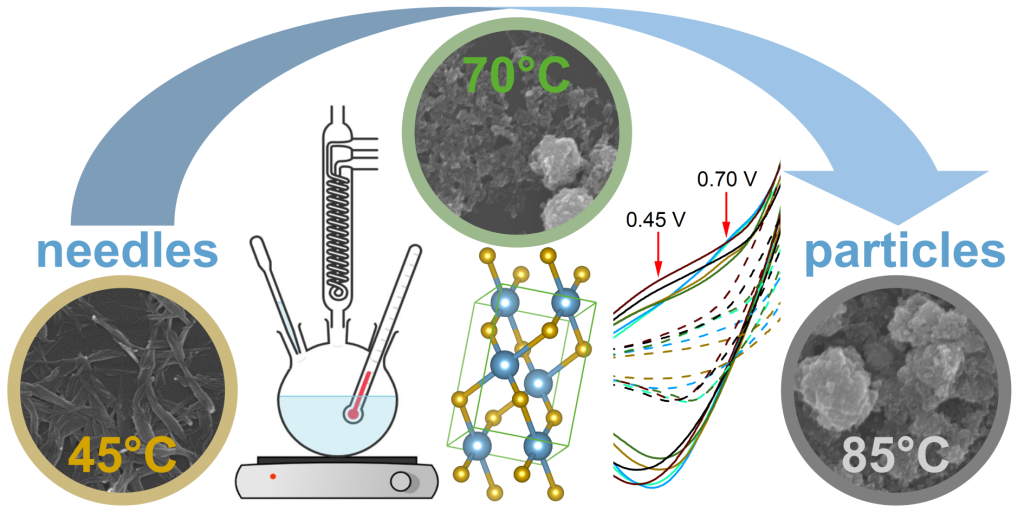CuO is a promising material in non-enzymatic glucose detection with advantages like high electrochemical activity, relatively low cost, and non-toxicity. When the material is nano-sized, its high surface area to volume ratio results in a greater number of active sites for the electron transfer process across the electrode, leading to a higher turnover reaction. A major challenge in the field is that various factors in the synthesis process impact the final product, thereby, leading to a different performance in glucose sensing.
In our recent paper led by Yujiang Zhu and published in Materials Advances, we report that CuO nanostructures synthesised via a facile wet chemical precipitation method can be controlled by synthesis temperature to form specific morphologies. No matter what the synthesis temperature, all formed nanostructures are predominantly CuO with varying contributions from other surface species, and have the ability and selectivity to sense glucose. However, distinct differences are found in the morphology of the nanostructures found changing from nanoneedles to nanospheres with an increase in temperature. This goes hand in hand with a change in electrochemical behaviour. In the critical transition region, even changes of a few degrees completely change the morphology and electrochemical performance. This work helps to understand the critical relationship between synthesis temperature and final nanostructure and can explain the seemingly random nanostructures and sensing behaviour observed in the literature.
The paper also includes contributions from the MSci final year project of Carolina Vigil-Hernandez, who is currently pursuing a PhD with Simon Humphrey at the University of Texas at Austin. This work is the result of a long-standing collaboration with Dr Despina Moschou and her group from the Department of Electronic & Electrical Engineering at the University of Bath. In addition, we had great local support from Dr Gemma-Louise Davies and Steven Firth.
Do you want to know more about how different synthesis factors impact the formation and sensing behaviour of CuO nanostructures? Stay tuned for more papers by Yujiang coming soon!

